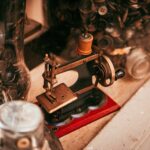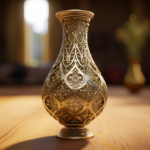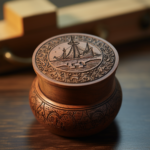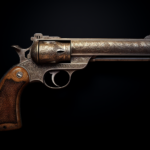Would you believe it if we said most people love collecting antique guns not because they add to their machismo attitude but because these antique pieces give them joy? Which takes us to an important question — what involves accurate antique flintlock pistol identification?
The Flintlock Firing Mechanism
Before we dive deeper into finding out what factors to consider when trying to procure an antique pistol, let’s have a quick look at the history of these pistols. First, let’s find out what “flintlock” means.
There is a certain mechanism that is used to ignite the gunpowder and discharge the pistol. This mechanism is termed “flintlock.” Highly popular, this ignition system was used in flintlock pistols from the early 17th century till the mid-19th century.
Several key components comprise the flintlock mechanism. These include a hammer, a frizzen, a pan, a priming charge, a flint, and a trigger. When a user pulls the trigger, the hammer gets released and strikes the flint against the frizzen.
This action produces sparks that fall into the pan. What is contained in this pan is a small amount of gunpowder known as the priming charge. The sparks ignite the priming charge and this, in turn, ignites the main charge of gunpowder contained in the barrel, causing the pistol to discharge.
Place in History
Used widely during their time, flintlock pistols played a significant role in military conflicts and civilian life. For instance one of the flintlock pistols that is part of a prestigious collection belonged to Philip Wharton Skene, a Scottish officer in the British army. If records are to be believed, Skene probably used this pistol in 3 major battles — Porto Bello (1739), the Battle of Fontenoy (1745), and the Battle of Culloden (1746). This piece is priced at $19,995 and to buy it you will have to get in touch with International Military Antiques.
There are many fascinating stories associated with most antique pieces, including firearms. No wonder antique flintlock pistols are highly sought after by collectors and enthusiasts. These pistols demand ownership not just for their historical value but also for their intricate craftsmanship.
Antique Flintlock Pistol Identification: A Quick Guide
So let’s look at some factors that will help you with accurate antique flintlock pistol identification. Knowing how to identify a genuine piece will prevent you from being scammed and ending up with a fake or cheap copy.
We can assure you that identifying an authentic antique flintlock pistol can be a challenging task. But equipped with knowledge about these guns and tips on how to go about identifying the real ones you will mostly not go wrong. Let’s dive in.
Study the Design and Style
One of the first steps in antique flintlock pistol identification is to examine its design and style. Get familiar with the different periods and regions that produced flintlock pistols. Pay particular attention to details such as barrel length, stock shape, and intricate patterns engraved on the pistol. These can provide valuable clues about the pistol’s origin and era of production.
Examine the Markings and Inscriptions
Antique flintlock pistols often bear markings and inscriptions that can offer important insights. What you need to look for are proof marks, manufacturer’s stamps, and engraved names or symbols on various parts of the pistol. Yes, these markings hold a lot of information. They can indicate the gunsmith or the workshop responsible for the creation of the pistol. This piece of knowledge will allow you to trace the pistol’s history as well as determine its authenticity.
Assess the Materials and Construction
The materials used to manufacture the pistol and the craftsmanship of an antique flintlock pistol can reveal a lot about its age and quality. Examine the stock, which is usually made of wood. Check for signs of aging, wear, and repair. Pay close attention to the metalwork, checking for consistent patina, signs of hand-forging, and evidence of traditional manufacturing techniques. Genuine antique flintlock pistols are likely to exhibit authentic signs of age and craftsmanship.
Analyze the Lock Mechanism
One of the crucial elements in antique flintlock pistol identification is the flintlock mechanism. That is why it is important to study the lock carefully, noting its design, shape, and engraved details. Consult with experts or compare it to reference materials to determine if it aligns with known styles from the period in question. Also, pay attention to the quality of the lock’s components. These include the frizzen, pan, and hammer, as these can provide additional insights into the authenticity of the pistol.
Seek Expert Opinions and Check Documentation
Is the authenticity of the antique flintlock pistol worrying you? The solution is to consult experts or professional appraisers. They possess the knowledge and experience necessary to accurately assess the firearm’s origin, condition, and value. Additionally, obtain historical documentation, such as provenance or records of previous ownership. These can add credibility and value to the antique firearm.
Opt for an Appraisal
Why an appraisal? Because when you choose to get an appraisal done you are ensured that what you own is not an imitation. Appraisers are experts in their field. They not only date your piece but also price it. This helps you know the real worth of your antique flintlock pistol as per current market trends. Professional appraisers from Appraisily have decades of experience. They can easily help you with antique flintlock pistol identification and offer an accurate appraisal.
Happy collecting and exploring the rich history behind these fascinating relics!






